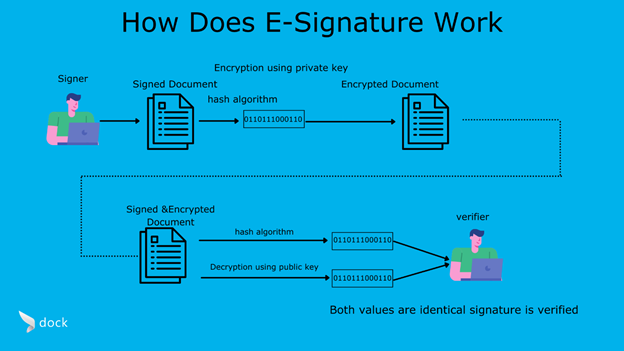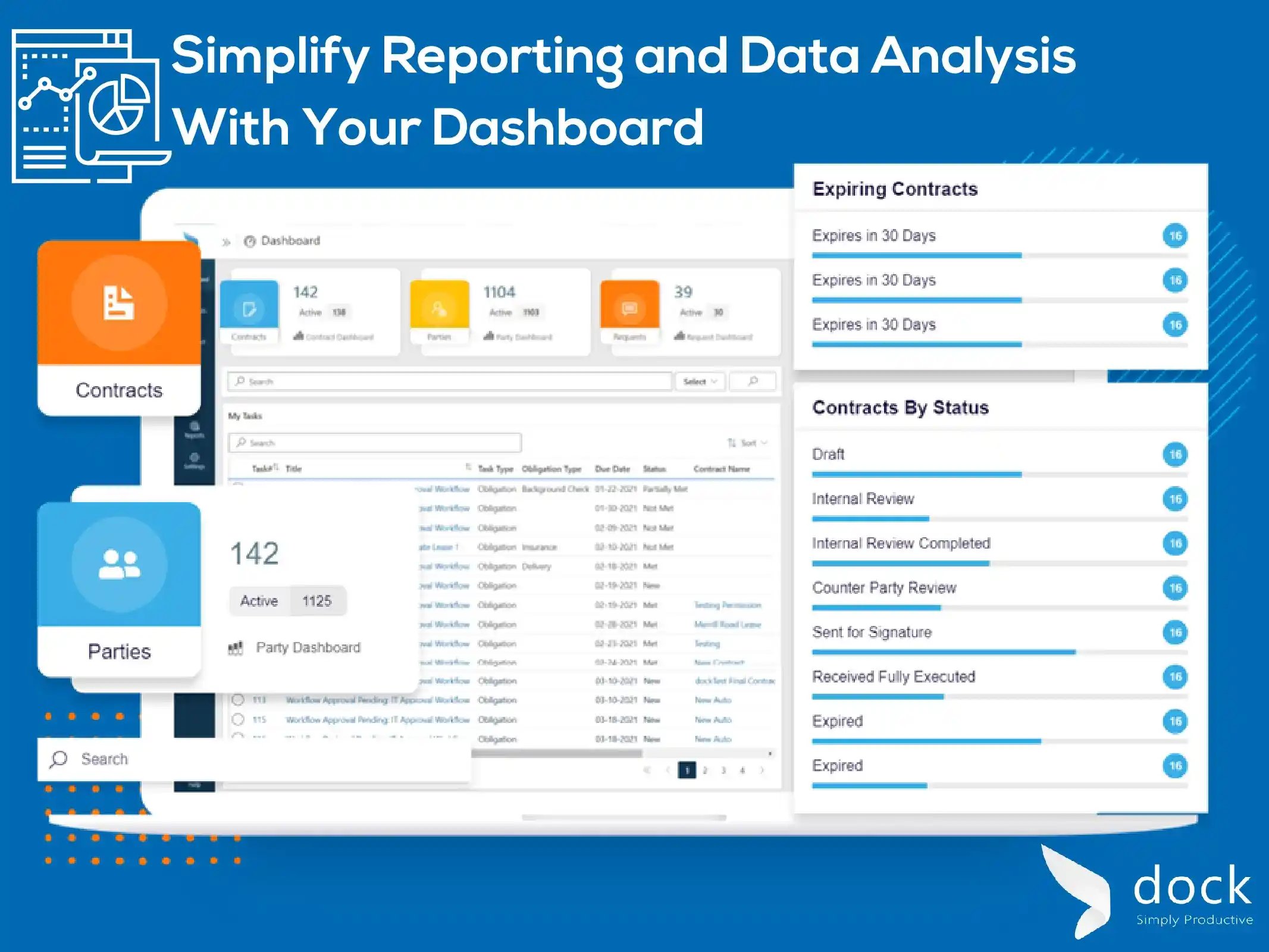
The Complete Guide to Contract Automation
In this complete guide to contract automation, we present all-things contract automation so you and your team are readily equipped to take your contract management to the next level. Contract automation helps to decrease costs spent on operations whilst improving workplace communication and collaboration across your teams.
Table of contents -
- What is contract automation?
- Will automating contracts help my business?
- What’s the difference between contract automation and manual contract management?
- What are the disadvantages of manual contract management?
- How do I start with contract automation?
- Benefits of contract automation
- The basics of contract automation
- Conclusion
What is contract automation?
Contract automation is a process in which software empowers internal teams within businesses and organizations to standardize the stages and tasks associated with the contract lifecycle, allowing for consistency and reliability in contracting processes. In this manner, automating your contracts serves an excellent role in risk mitigation. Your legal department and other teams involved in the contract lifecycle can self-serve on contracts, allowing for more autonomy, independence, and productivity while ensuring risk is managed and that contracts maintain accuracy and compliance.
With contract management software inclusive of contract automation capabilities, users can effectively build, store, and securely manage all of their contracts within their centralized software solution and design standardized contract workflows according to the specific type of contract at hand.
Contract automation software supports contract management teams to automate mundane, low-level tasks during any stage of the workflow in a contract’s lifecycle. For example, you might automate the approval process with a standardized contract approval workflow where you configure automatic renewal notifications for select dates.
A 2018 IDC report details how data professionals (which accounts for approximately one-third of a given organization’s workforce on average) usually waste about 30% of their time by needlessly searching for contract metadata, safeguarding said metadata, or preparing the metadata. This figure demonstrates why time wasted can seriously impact your productivity levels. By adopting contract automation, you cut down on time spent searching for what you need at the times you need it most.
With contract automation, your software solution can standardize and direct contract lifecycles automatically rather than manually by an in-house manager. Contract automation allows you to configure workflows custom to your company’s present needs and objectives, simplifying the sequence of required tasks and actions needed for each contract at each stage of the lifecycle. Now, you can confidently build, sign, and execute contracts with both speed and security. Streamline document pass-off with automation, triggering notifications to select stakeholders at the right times when action is needed on their part.
Find out more about the advancements that contract automation has provided to the business world here.
.webp?width=2133&name=01%20(1).webp)
Will automating contracts help my business?
The simple and perhaps obvious answer, is yes. Especially if your business deals with a high volume of particularly complex contracts, then contract automation can certainly provide a bit more reliability and risk mitigation to your contract lifecycle management strategy. If you currently experience difficulties in maintaining quality in your contracting procedures due to a growing contract portfolio, then adopting contract automation software might be an intelligent step to take. Automating your contracts will help your various departments and teams that contribute their expertise within various stages of the contract lifecycle. Adopting automation can support teams like legal, HR, finance, procurement, and sales, just to name a few. For example, legal largely oversees the contract intake and request process, as well as the contract approval process and the creation of contract templates.
Automation makes it easy for legal to ensure that other departments understand what actions need to be taken place on any given contract. In addition, automation takes away the need for legal to constantly communicate with other teams as to where specific contracts and associated documents are located.
What’s the difference between contract automation and manual contract management?
Manual contract management is inherently risk-prone due to a lack of absolute standardization and cloud security. A manual contract procedure will often times look like the following: an employees located a contract template (likely stored within a shared drive, which is risky in and of itself), completes data entry fields, and then shoots off the completed template via email to their legal department for review prior to the document being shared with the counterparty.
Next, the counterparty will download the document, opening it in Microsoft Word for redlining and commenting. After making their adjustments to the file, they email the document back. The email tag of back-and-forth communication only increases the risk of miscommunication, security breaches, and inaccuracies in tracking and monitoring your contract negotiations. And what does this ultimately mean? Reduced contract visibility on the part of all parties involved.
From here, each party will agree to the contract and sign it via traditional wet signing where they must scan and send the document back, or via electronic signature. After the contract is signed, the contract is sent by email (assuming the user remembers to do so!) to all involved parties and relevant contract stakeholders (i.e., finance and legal). Then, fingers crossed, the contract is stored and saved in a shared drive. However, it’s very common for the contract to be saved in multiple versions in several places within a business. It’s typical to find several versions of the same contract kept as printed copies, as well as stored in desktops and filing cabinets.
What are the disadvantages of manual contract management?
Manual contract management essentially initiates bottlenecks and increases the likelihood of delays that are essentially preventable. Let’s take a look at some of the most common disadvantages of manual contract management. You might instantly feel inclined to adopt contract automation once you learn more below!
Poor contract quality
Without automation, it becomes difficult to standardize contract procedures and ensure that every document is compliant and accurate. In addition, time is wasted telling colleagues the same contract information (i.e., where files are stored, how to access them, etc.).
Unintentional contract duplication
It’s common in a manual contract management approach to accidentally duplicate your work. No need to create a contract in Word and then create the same contract in a different platform. Instead, use automation to standardize and centralize every contract, maintaining it in one place.
Lack of standardization
Reduced reliability in your final contract documents, inconsistencies in contract language, and contract documents that, in the simplest terms, just look completely unprofessional – are the results of a contract management approach that lacks automation.
Increased risk
Without the ability to effectively control and track contract versions, you’ll likely have various team members working on incorrect contract versions, driving up risk potential. This means your teams can not work simultaneously on the same agreement while ensuring the accuracy of contract terms.
Bad experience for counterparties
Don’t let your contract lifecycle management stand in the way of providing a best-in-class experience for your counterparties. Adopt contract automation software so your counterparties have a smooth and streamlined contract experience.
Slow contract execution and delays
Manual contract management lends itself to delays and wasted time. Just consider the time it takes to sign a contract and send it off using the traditional wet signing and sending method. This means missed opportunities and slower contract lifecycles, so you’ll close less deals rather than realize more opportunities for business.
How do I start with contract automation?
You can build out automated contract workflows to enable your teams to self service and create new contracts without the assistance of your legal department every time. With contract automation, your team can follow the steps below for contract success:
Build contract templates
Typically, legal wants complete visibility over the company’s contract templates to ensure accuracy in the included legal language and provisions, as well as compliance with various regulatory requirements. When building contract templates, you can ask for the assistance of your communications department to ensure that your templates are effectively on-brand.
Consider the following questions when creating your contract templates:
- Does the contract template contain accurate terms, legal terminology, provisions?
- What compliance standards must be adhered to? Does the template maintain compliance?
- Is our company appropriately represented by what is presented in the template?
- Does the template engage the reader with an easy-to-follow and visually appealing layout?
- Will the template increase the likelihood of new business relationships and positive outcomes?
Leverage self-serving contracts
Your departments that play a direct role in the contract lifecycle management wing of your business are the departments that build and send contracts. Depending on the type of contract at hand, certain departments will collaborate together to pinpoint exact details to include in each contract. Contract automation is excellent for designing associated documents to be attached to contracts.
Question-and-answer flows are commonplace in contract automation. These flows allow users to rapidly enter data, which is later auto populated appropriately into data entry fields within your contracts and associated files. These question-and-answer flows commonly capture metadata like names, company names, key data, phone numbers, and business addresses into accompanying smartfields. As previously mentioned, the metadata is then auto populated into the autogenerated contract. This supports a standardized, risk mitigate contract lifecycle management approach.
Employ contract approval workflows
With contract approval workflows, you minimize the need for your legal departments to approve each contract that you send. According to the specific circumstances at hand and your counterparty, some contracts might need a bit more attention from your senior management and legal department. However, contract stakeholders oftentimes are given the tools necessary to approve their contracts. In this manner, you develop rapid, accurate contract lifecycle management procedures by eliminating the wait-time associated with having legal approve each contract each time.
Send for signature and execution
It’s very common for senior management to be the end-all be-all in terms of signing select contracts. According to the type and size company, department heads may be the go-to point for contract signing. In rapidly growing organizations where employees are being added left and right, leveraging an electronic signature contract workflow is extremely common to ensure signers can securely and rapidly sign contracts.
Benefits of contract automation
Here’s a quick run-down of some of the most prominent advantages of automating your contract lifecycle management:
- Shorter contract lifecycles
- Increased consistency and organization of each lifecycle stage
- Improved task management
- Maximized contract transparency and visibility
- Decreased contract risk
- Elimination of constant assistance from your legal department
- Major reductions in contract delays and bottlenecks
- Increased quality of business relationships
- Heightened client satisfaction
- Rapid turnaround times with eSignature
- Efficiency in building contracts (preapproved clause and contract template libraries)
- Accessible obligation tracking
- Secure contract storage in the cloud
- Automation of contract reminders and notifications
- Improved contract collaboration and clear communication
- Accessible contract data for reporting purposes
- Improved version control with redlining and internal commenting in Microsoft Word
- Increased rates of compliance
The basics of contract automation
Here are some key features to look for when adopting a contract management solution inclusive of contract automation capabilities:
A dynamic editing tool
A dynamic text editor can help you include tables, images, and other content to enhance your contracts.
Electronic signature integrations
With an electronic signature platform, you can rapidly and secure send contracts off for signature to expedite the execution of the agreement. In this way, stakeholders can sign contracts at their own convenience on their mobile devices in any location with an internet connection.
Dock 365 is integrated with Sertifi, Adobe Sign, and DocuSign electronic signature solutions.

Collaborative digital portals
Streamline editing and negotiations with portals that allow you to easily redline and amend files without needing to navigate from one digital platform to another. No need to move from your contract management system into other platforms and run the risk of losing essential contract metadata and audit logs.
Smartfields
Contract smartfields maintain contract metadata for simple and accessible searching and tracking. In this way, you can easily glean insights on key contract metadata including, but not limited to: key dates, auto renewals, opt-out windows, values, contact information, names, company names, businesses addresses, and more. These smartfields work synchronously with CRM solutions to ensure data accuracy.
Visual contract dashboards
Have all the contract data you need readily accessible with proactive contract dashboards. These provide visual timelines and information regarding the location of contracts within their lifecycles, contract performance, and more. You can easily maintain and track iterations of contracts here, making it easy to review past contract versions.

Internal commenting capabilities
In the case that standard contract terms are changed, stakeholders can leverage internal commenting to work together in sync on any given file without the stress of inaccuracies and discrepancies in version control or errors in audit logging.
Conclusion
We hope you take all of our suggestions and insights into consideration for your organization’s contract lifecycle management procedures so you can generate more contract value and results. With contract automation, you’ll increase the value of your contracts within a short period of time, and this will help you determine where else within your business that you could benefit from automation. When adopting contract automation software, we highly suggest starting small and ensuring smooth adopting and user-friendliness of your solution. If you have any comments or questions, please leave them in the comments section below.
Learn more about our Dock 365 Contract Management System here.
Learn more about Contract Lifecyle Management (CLM) Software here.
For more information, we would like to welcome you to schedule a free demo with us today.

Written by Lindsey Paulk
Lindsey Paulk is a Content Writer in Jacksonville, Florida that specializes in digitally communicating all-things contract management.
Reviewed by Naveen K P
Book a Live demo
Schedule a live demo of Dock 365's Contract Management Software instantly.



